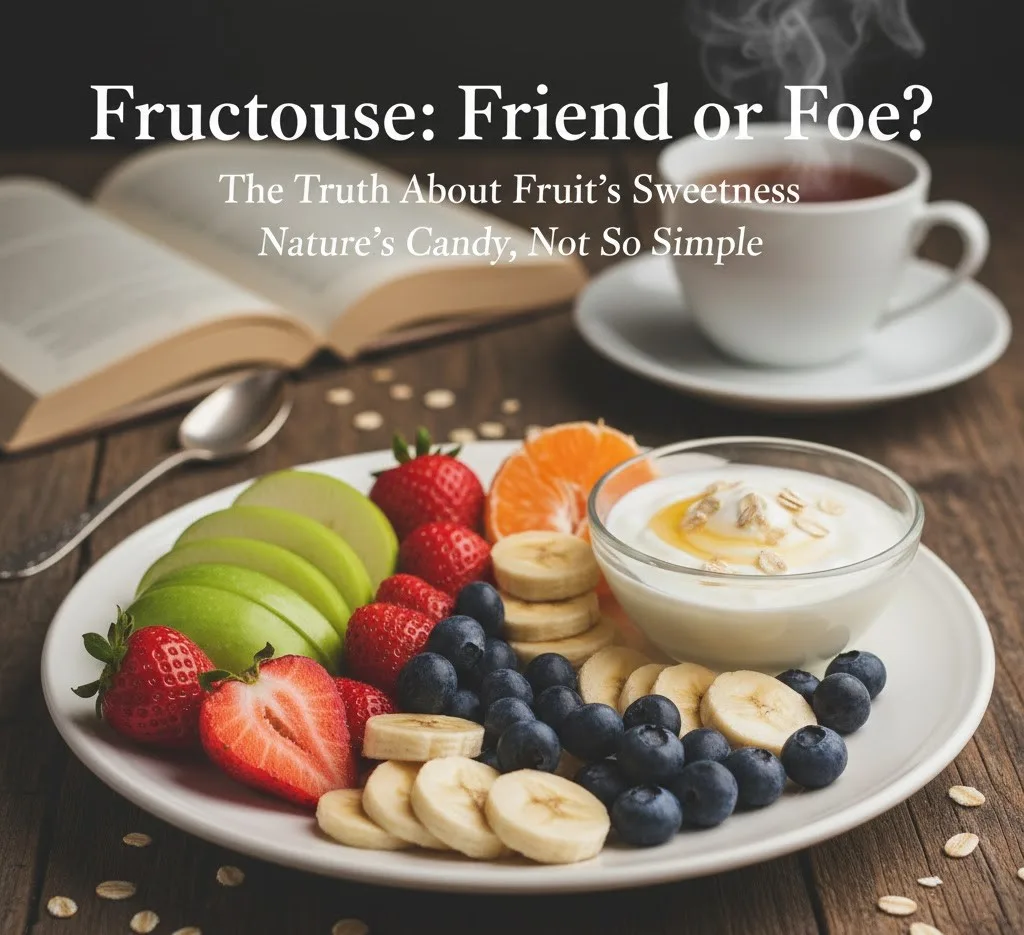For years, fructose, the sugar naturally found in fruits, has been a subject of intense debate and often unfairly demonized. While excessive consumption of high-fructose corn syrup in processed foods is indeed a concern, a viral image circulating online (and a common point of contention) highlights a crucial distinction: "Fructose is not our enemy. The conversion of fructose that comes from fruit into fat is not simple."
This statement, accompanied by a biochemical pathway diagram, underscores a fundamental principle in nutrition: context matters. Let's delve into the fascinating journey of fructose in our bodies and understand why fruit-derived fructose isn't the simple villain it's often made out to be.
The Liver's Role: A Dedicated Pathway
Unlike glucose, which can be metabolized by almost every cell in the body, fructose metabolism primarily takes place in the liver. When fructose enters the liver, it undergoes a unique series of transformations:
-
Phosphorylation: Fructose is rapidly converted into Fructose 1-phosphate by the enzyme fructokinase. This step is particularly fast and largely bypasses the regulatory checkpoints that control glucose metabolism.
-
Cleavage: Fructose 1-phosphate is then split by aldolase B into two three-carbon molecules: glyceraldehyde and dihydroxyacetone phosphate.
-
Further Transformation: These molecules are further processed. Glyceraldehyde is converted to glyceraldehyde 3-phosphate by triose kinase. Dihydroxyacetone phosphate and glyceraldehyde 3-phosphate are interconvertible via triose-phosphate isomerase.
These intermediate molecules—dihydroxyacetone phosphate and glyceraldehyde 3-phosphate—are significant because they can feed into several metabolic pathways:
-
Glucose Production (Gluconeogenesis): They can be converted into glucose.
-
Glycolysis: They can enter the glycolysis pathway to produce energy (ATP).
-
Lactate Production: They can lead to the formation of lactate.
-
Fatty Acid Synthesis (Lipogenesis): Crucially, they can also serve as building blocks for fatty acid synthesis, which can then be stored as triglycerides (fat).
The "Not Simple" Distinction: Fruit vs. Added Fructose
The key takeaway from the Persian image's message is that the conversion of fruit-derived fructose into fat is "not simple." Why is this an important distinction?
1. Dosage and Delivery: When you eat whole fruit, you're not just consuming fructose. You're also getting: * Fiber: Slows down digestion and sugar absorption, leading to a more gradual release of fructose into the bloodstream and liver. * Water: Adds bulk and contributes to satiety. * Vitamins, Minerals, and Antioxidants: Essential micronutrients that support overall health.
This combination means that the liver receives fructose in a much more controlled and gradual manner when consumed as whole fruit. The presence of fiber and other nutrients modulates the metabolic response, making it less likely for a large "bolus" of fructose to overwhelm the liver's capacity and push it towards excessive fat production.
2. Satiety and Caloric Load: It's much harder to overconsume fructose from whole fruits compared to added sugars. Eating several apples or a large bowl of berries provides significant fiber and water, leading to feelings of fullness long before you'd ingest the amount of fructose found in a single large soda or candy bar. The sheer caloric load from processed foods high in added sugars (often high-fructose corn syrup) vastly exceeds what most people would consume from fruit.
3. Nutritional Density: Fruits are nutrient powerhouses. They provide essential vitamins (like Vitamin C), minerals (like potassium), and a wide array of antioxidants and phytochemicals that protect cells, reduce inflammation, and support various bodily functions. These benefits far outweigh the concerns about their natural fructose content for most healthy individuals.
The Real Enemy: Excess Added Sugars
The true culprit behind many metabolic health issues is not the fructose naturally occurring in fruit, but rather the excessive consumption of added sugars, particularly those found in sweetened beverages, desserts, and highly processed foods. These sources often deliver a massive dose of readily available fructose (and glucose) without any accompanying fiber or nutrients. This rapid, high-dose delivery can:
-
Overload the liver, pushing it towards increased fat synthesis.
-
Contribute to insulin resistance.
-
Increase the risk of non-alcoholic fatty liver disease (NAFLD).
-
Lead to excessive calorie intake and weight gain.
Conclusion
So, is fructose a friend or foe? When consumed as part of whole fruits, in moderation, it is undoubtedly a friend. Fruits are integral to a healthy diet, providing vital nutrients and contributing to satiety. The nuanced biochemical pathway reminds us that while the potential for fructose to be converted to fat exists, the body's response is highly dependent on the source and quantity.
Instead of fearing a banana or an apple, our focus should remain on reducing our intake of processed foods and beverages laden with added sugars. Enjoying the natural sweetness of fruit is a delicious and healthy habit to embrace.

